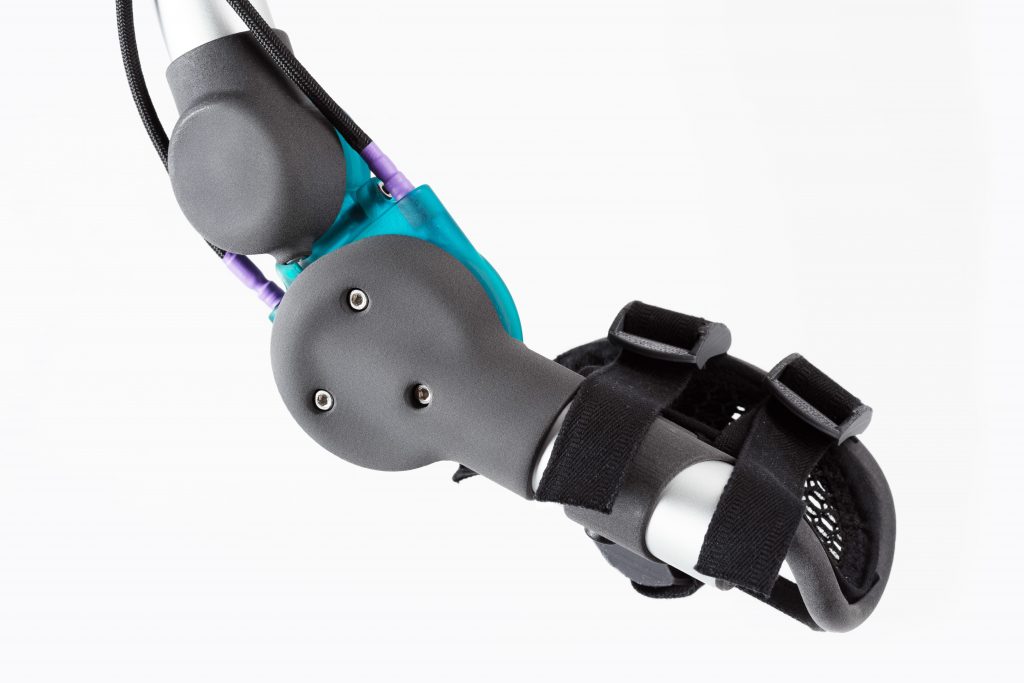In partnership with 3D printer manufacturer Sinterit, designer Bartłomiej Gaczorek has designed a custom fitting exoskeleton for children with SMA (Spinal Muscular Atrophy).
The genetic condition, which can severely impede the lives of young children, causes a loss of movement in limbs due to dysfunctional nerves.
With adequate equipment however, many children with SMA can find the support they need to keep healthy and active.

Parent-approved
The exoskeleton project was launched by Gaczorek after receiving a call from a parent asking for assistance. At this point, the family had tried many 3D printed designs for their 3 year old son, but none had been sufficient in meeting the requirements.
A primary criteria of the design was that comfort should remain paramount throughout the device’s conception. Second, but also important, was the cost to produce the arm, and also the reliability of its design and materials.
Taking these needs into account, the arm was created by Gaczorek with consideration of other supportive exoskeletons on the market, and consultation with parents, doctors and physiotherapists who understand the condition.

SLS is the best solution
Gaczorek CAD modeled the exoskeleton using Autodesk’s award winning 3D design software Fusion 360. It was then 3D printed on a Sinterit Lisa desktop SLS 3D printer.
“I decided to print main elements in SLS technology,” says Gaczorek, “because it is able to print complex internal structure. [A] very important factor for me is also the comfort of user which is much better with SLS/SLA than with FDM technology.”
The cost of production was also significantly cheaper than the market’s industrial alternative.

Future advances
The successful exoskeleton has now been used to support the mobility of 3 children with SMA. It is hoped that in time the device will reach more children worldwide.
This year, Sinterit received €1 million in funding from Germany’s FIT AG with the aim of advancing affordable SLS solutions.
Looking to recruit in 3D design? Register on our 3D printing jobs site now.
For to-the-minute 3D printing news updates, follow us on Twitter and like us on Facebook. The latest stories can also also be delivered direct to your inbox. Sign up to the most widely read newsletter in the industry here.
Featured image: A supportive arm exoskeleton complete with SLS 3D printed components. Image via Sinterit


